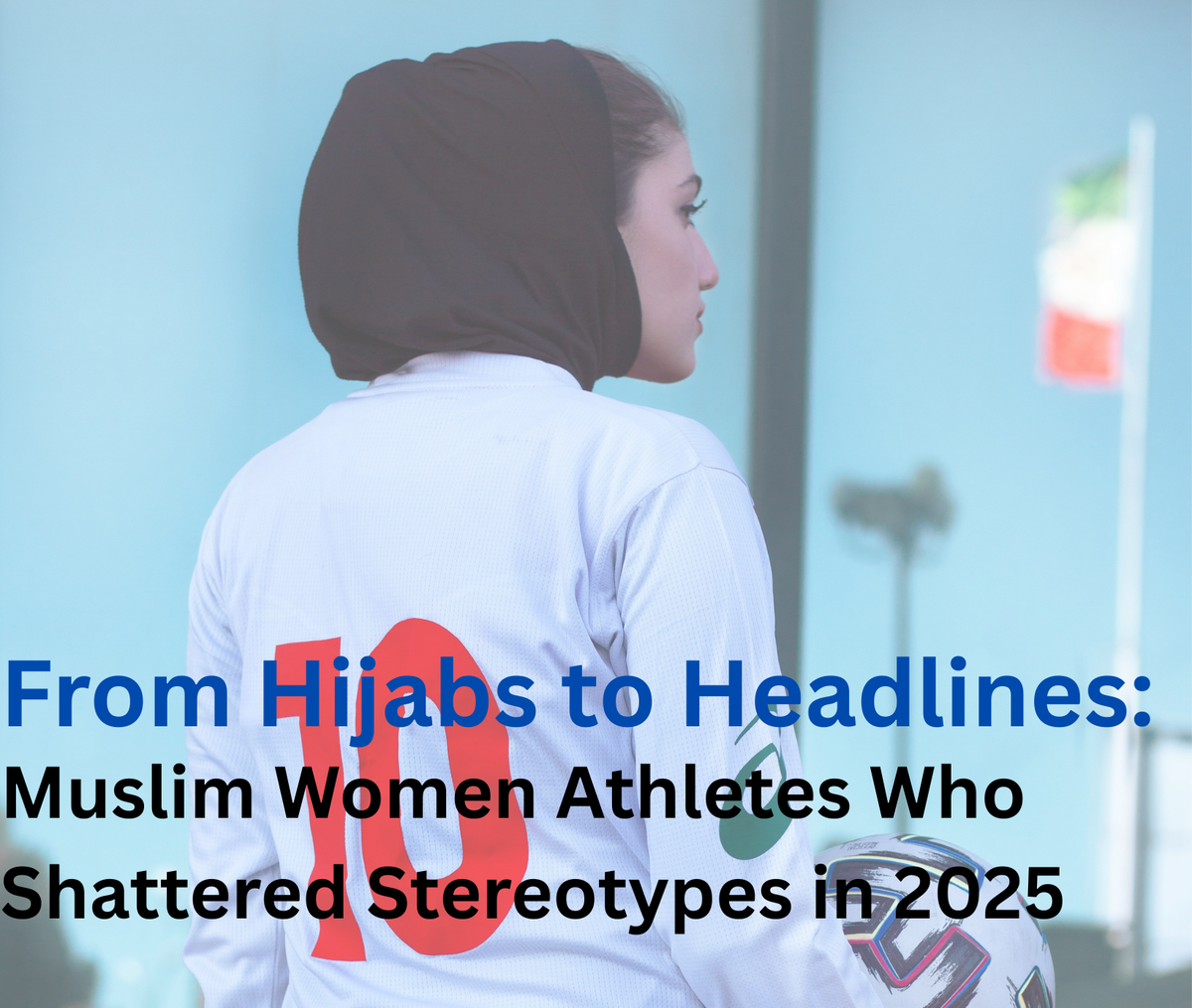From Hijabs to Headlines: Muslim Women Athletes Who Shattered Stereotypes in 2025
These Muslim women athletes didn’t just compete—they shattered stereotypes and rewrote sports history in 2025.

These women didn’t just win. They rewrote the rules.
In a year of record-breaking performances, surprising upsets, and historic milestones in global sports, Muslim women athletes stood out as powerful voices and champions on the international stage. They were not just playing the game; they were transforming it.
From the track fields in Doha to basketball courts in Paris, and esports arenas in Southeast Asia to martial arts rings in Turkey, 2025 was a pivotal year for Muslim women in sports. This blog honors their resilience, successes, and their bold presence in a world that once doubted them.
The Global Rise of the Hijab Athlete
The term “hijab athlete” once pointed to perceived barriers. Now, it represents strength, identity, and defiance. 2025 saw increased visibility and representation of Muslim women competing with hijabs as part of their professional uniforms, not in spite of them.
The landscape changed significantly when organizations like FIFA, the International Olympic Committee, and FIBA established inclusive policies years ago. This year, the positive effects of these changes truly flourished.
Star Profiles: Women Who Led the Charge in 2025
Here’s a look at some iconic Muslim women athletes who made a global impact in 2025:
Fatima Al-Harthi (Qatar) – Track & Field
A sprinter who now holds the record for the fastest 100m sprint while wearing a hijab, Fatima became a media sensation during the 2025 Asian Games. Her viral finish was more than a victory; it was a statement.
“I run with my faith. I run for every girl who was told she couldn’t."
Zehra Kara (Turkey) – MMA Champion
Once discouraged from competing in contact sports, Zehra not only triumphed in the international lightweight championship in Abu Dhabi but also became the first hijab-wearing MMA world title holder.
Her knockout victory in just 43 seconds made headlines globally, challenging the idea that hijabi athletes are “too conservative” for combat sports.
Aaliyah Khan (UK) – Football Forward
This British-Pakistani striker became a star in the Manchester Women’s League, scoring the winning goal in the UEFA Women’s Champions Cup semifinal.
Her celebration while wearing a hijab—arms wide and head lifted to the sky—is now an iconic image shared worldwide.
Sara Rahmani (Afghanistan) – Cricket
Despite ongoing challenges in Afghanistan, Sara rose as the captain of the Afghan Women’s Cricket team, now playing under the ICC refugee team banner. Her leadership has given displaced Afghan women a powerful voice.
Nour El-Sayed (Egypt) – Esports Champion
In a virtual world where women face both gender and cultural bias, Nour made history by becoming the first Muslim woman to win the Global Esports Masters in Tokyo.
Competing in a male-dominated field, Nour’s win broke stereotypes that go far beyond gaming.
2025: A Year of Visibility and Victory
This year wasn’t just about personal achievements. It represented a cultural shift. Across social media, brand endorsements, and mainstream media coverage, Muslim women athletes gained remarkable recognition.
Social Media Powerhouses
Athletes like Zehra and Aaliyah are not just sports stars; they are also digital influencers, gaining millions of followers. Brands like Nike and Adidas launched special-edition gear in collaboration with hijabi athletes.
Olympic Impact
While 2025 didn’t feature an Olympics, several key qualifiers and international events provided platforms for Muslim athletes to shine. Many have already secured spots for Paris 2028.
Brand Collaborations & Commercial Wins
Marketing analytics show that female Muslim athletes generated 28% higher engagement rates compared to non-hijab-wearing peers in 2025, according to a report by SportsMediaLab.
Key Partnerships:
Nike Pro Hijab 3.0, released in collaboration with Aaliyah Khan, sold out within 4 hours.
Red Bull signed Zehra Kara for a campaign called “Limits Redefine,” focused on female fighters.
Puma partnered with Nour El-Sayed to launch a gaming hijab made for comfort under headsets.
These partnerships were more than just symbolic; they drove real revenue, showing the financial strength of inclusion.
Overcoming Challenges: The Reality Behind the Spotlight
Despite their successes, the journey is not easy. Muslim women in sports still face obstacles from various angles.
Institutional Bias
Even in 2025, there are leagues and regional federations where hijab-wearing athletes are either underrepresented or overlooked. Access to sports facilities and proper coaching remains limited in parts of the Middle East, North Africa, and South Asia.
Cultural Resistance
Many athletes still deal with family and societal expectations. Competing at high levels often requires balancing cultural and religious tensions, especially in conservative areas.
Media Misrepresentation
Although coverage has increased, stories often focus on the “novelty” of the hijab, rather than on the athletes' skills. They are still frequently treated as exceptions, not the norm.
Women Leading the Change: Coaches, Referees & Organizers
Not all heroes are on the field. 2025 also saw more Muslim women taking on roles in sports governance and training:
- Lina Basheer (Sudan) became the first female FIFA referee from a Muslim-majority country.
- Huma Nadeem (India) founded South Asia’s first all-women martial arts league.
- Rania Yusuf (Jordan) served as the chief coordinator for the MENA Women’s Sports Inclusion Forum.
Their efforts are establishing the framework for future generations.
Community Impact: Beyond the Scoreboard
The rise of Muslim women in sports is creating a ripple effect beyond professional leagues.
Grassroots Initiatives:
“Goal Sisters” in Indonesia offers soccer clinics for hijabi girls aged 8 to 15.
“Hijab Hoops” in Toronto provides free basketball equipment and training for Muslim teens.
Mental Health and Identity:
Representation goes beyond visibility; it also promotes healing. Young Muslim girls can now see themselves in athletes who look like them, redefining what it means to be both devout and dynamic.
A Glimpse into the Future: What’s Next?
The future looks bright and promising. With better representation, supportive networks, and global recognition, the next generation of Muslim women athletes will:
- Compete on more equal footing.
- Secure leadership roles.
- Break commercial barriers.
We are entering a time where the “hijab debate” is no longer about seeking permission, but about showcasing performance.
Conclusion: Rewriting the Rules
What Muslim women athletes achieved in 2025 is not just about records or medals; it’s about representation, defiance, and rewriting the rules that once kept them out.
They are champions of their sports and representatives of identity, dignity, and strength.
“These women didn’t just win. They rewrote the rules.”
Now it’s our turn to celebrate them, support them, and ensure their stories are told as inspirations, not exceptions.




